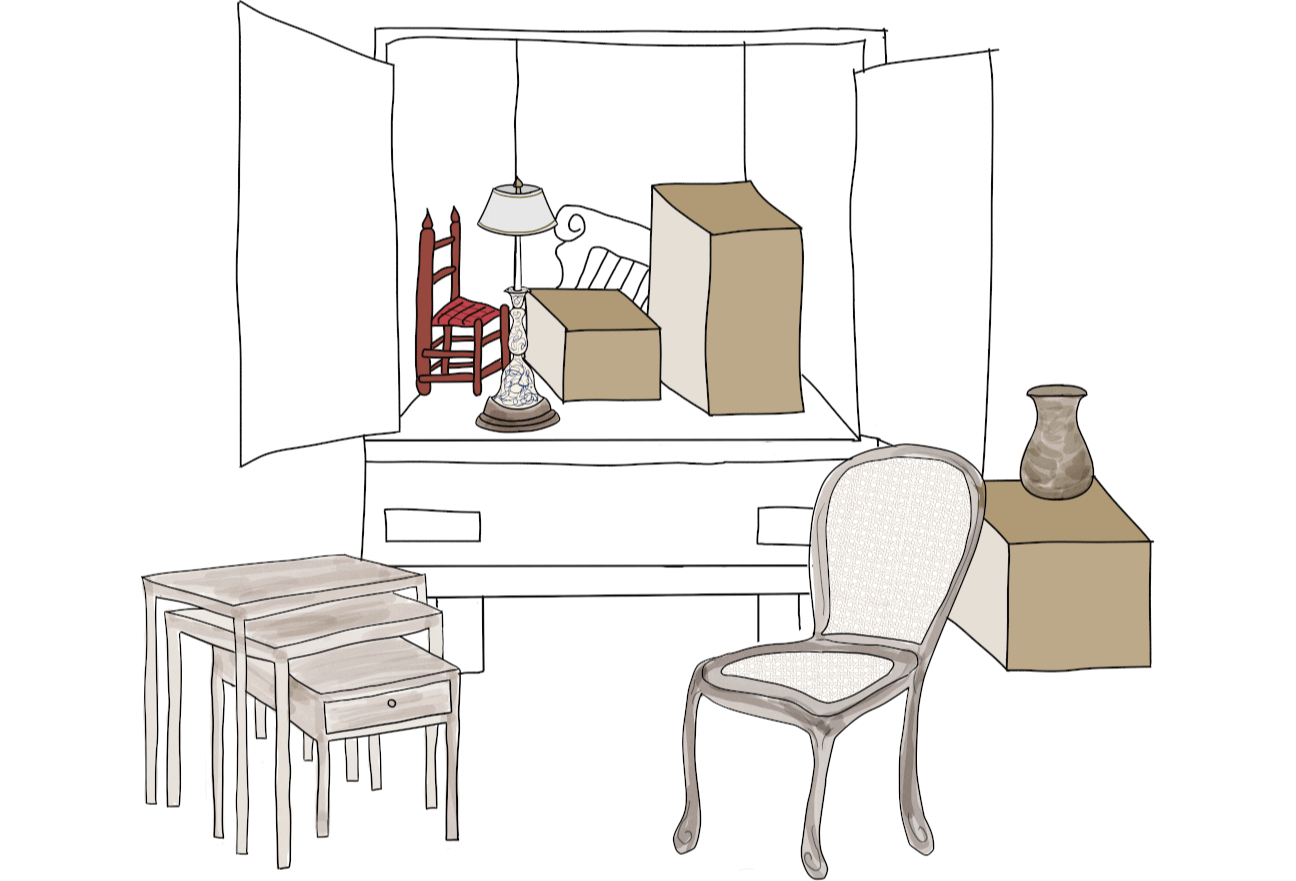Love and Things

We were only in our thirties when we moved our young family to Aotearoa from the northern hemisphere. Our parents were fit and able, and came to see our new life in our beautiful new country. But that was then. How were we to know it would be less than ten years before we would get a breathless call from overseas. “Can you get a ticket? They’re operating dad tonight. I hope he makes it.” One by one, our old people died, and we were far away when they fell ill.
As a way of compensating for what I guiltily saw as abandonment of my family, I kept many of their belongings close to me. My dad’s desk, my grandmother’s table, my mom’s coffee cups and butter knives, even a plastic ruler with the calendar for 1964 printed on the back: my grandfather’s. It was almost if by keeping these things, I was keeping my parents, my grandparents, and all my tupuna close to me.
My house is not a shrine, but there is almost no furniture of my own, besides a couple of second hand fireside chairs. Everyone of those objects has a story that I can tell if you ask me. And sometimes, even if you don’t.
It’s all a bit much. Giving one of these objects away, or putting it out of sight is a kind of sacrilege. And truth be told, I don’t even like all of them all that much. I have this credenza (I didn’t even know what a credenza was! I am not a credenza-kind of person. A credenza is, for the record, a little sideboard that you might put in the entry way, or behind a table. I finally put it in the mud hall and store gum boots in it, wondering if my grandmother is turning in her grave (or hopefully giggling at me from on high).
Figuring out how to detach myself from my family’s objects (or probably more accurately, figuring out how to release the guilt I felt at having left them to live so far away), was curiously, helped along by one such object. Perhaps the most treasured of all my grandmothers belongings was her tear bottle. We all grew up inspecting it, sizing it up, wondering at its name. We marvelled at the intricate pictures painted on the inside of the glass. It sat in her living room under the lamp.
Twenty years after her death, I brought up my grandmother’s tear bottle to my own grandson who was having a weep. “My grandmother had a tear bottle, you know,” I said, in order to distract him. “A tear bottle? What’s a tear bottle?” he said through his own tears.
Aha! I would have to find out. And what I found out about tear bottles in general, and this one in particular, turned everything on its head! What we thought we knew was anything but what was true. And this is how I started drawing The Tear Bottle. As my sisters, cousins and aunties tried to make sense of the new story of my grandmother’s tear bottle we learned more about what it is to be a family, to love, grieve and let go of things.
The ghosts of my parents and grandparents make an appearance in The Tear Bottle, and I am pretty sure we are OK.